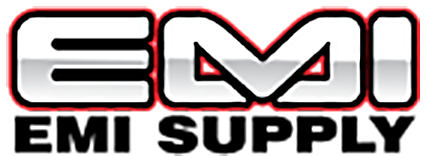Abrasives Lesson 13: Woodworking Considerations
Lesson 13
The basic calculation for determining the cause of marking is:
Spacing of Marks =
Work Speed (Inches/Minute)
RPM of Rotating Member
To determine the cause of chatter marks use these calculations:
(1) Belt Speed (SFPM) =
Roll Dia. (Inches) x 3.14 x Roll RPM
12
(2) RPM of Belt =
Belt Speed FPM x 12
Belt Length (Inches)
(3) Splice Mark Spacing =
Work Speed (Inches/Minute)
RPM of Belt
(4) Contact Rolls
RPM of Roll =
Belt Speed (Inches/Minute)
Roll Dia. (Inches) x 3.14
(5) Contact Roll Mark Spacing =
Work Speed
RPM of Roll
For the idler roll substitute the idler roll diameter
(6) Automatic Tracking
Mark Spacing =
Work Speed (In./Min.)
No. of Reversals
(7) Main Drive Motor
Mark Spacing =
Work Speed (In./Min.)
RPM of Motor
(8) Main Drive Transmission Belt
RPM of Drive Belt =
Pitch Dia. of Motor Sheave (Inches) x Motor RPM
Pitch Length of Drive Belt (Inches)
(9) Mark Spacing =
Work Speed (In./Min.)
RPM of Drive Belt
Irregular Surface Finish
This area encompasses those problems such as streaking, burning, tapered panels, etc. There are several conditions that can cause streaking, grooving, and raised ridges. Straight streaks can often be the result of contact roll wear, dressed or damaged abrasive belt or foreign matter loading or damaging contact roll, pad cover, or belt backing. Longitudinal grooves can be the result of too soft a contact roll or platen pad, damaged contact roll, and/or platen or scored or stripped abrasive belt.
Streaks and other defects such as shadows and random scratches may result if workpieces are not fed equally across the width of the belt. When workpieces are fed unequally, one side of the machine and belt get more severe wear than the other. As the side panel goes through the machine, uneven sanding and streaking can occur.
Poor tolerances or uneven dimensions after sanding can usually be traced to the machine itself. The workpiece may also be the source. Measurable variation in panel density can result in a variation in panel thickness. Low-density areas are more easily sanded than high-density areas.
Variations in panel thickness can be traced to problems in various areas of the machine. Cone-shaped contact rolls, platen or contact shoes out of parallel, contact roll and conveyor bed not parallel, or a worn conveyor belt can cause tapered panels. Other causes for uneven dimension across the width of the panel include dumbbell-shaped contact rolls, (worn at the middle), platen or conveyor belt is worn at the middle (thin in the center, thick on sides), contact roll larger or smaller in the center or platen and/or conveyor wore similarly. Irregular thickness through the panel length is caused by panel slippage due to glazed conveyor belt or improperly set pressure rolls or shoes, particularly when used in conjunction with textured or soft conveyor belts.
Problems with other types of sanding machines can be identified much easier. Most can be traced to belts, wrong belt splice, wrong product specification (too stiff, flexible), worn or misaligned form blocks on mold sanders, misaligned shoe and/or bed on manual stroke sanders, misaligned or damaged pneumatic platen, belt and/or graphite canvas cover or unparallel feed table and platen on automatic stroke sanders or damaged graphite covered canvas on edge sanders.
____________________________________________________________________________________________
Questions on Lesson 13
1. The primary problem area for a woodworking plant is:a. Stroke Sanders
b. Dust Collectors
c. Wide Belt Machines
2. A customer sanding glued up panels on a 3-head machine using a 60, 100, 150 grit sequence should use the following contact roll on heads 1 and 2:
a. Metal, 55A
b. 90A, 60A
c. 80A, 60A
3. A chatter mark is an:
a. Unevenly spaced mark on the panel surface parallel to the contact roll
b. Evenly spaced mark on the panel surface parallel to the contact roil
c. A long, shiny mark running the length of the panel
4. What is the correct belt speed in surface feet per minute (SFPM) of a contact roll 14 inches in diameter running at 1850 RPM (round off to nearest whole number):
a. 9,000
b. 6,777
c. 4,250
5. Which of the following lists several types of irregular surface finishes on panels:
a. Burning, streaking, tapered panels
b. Loading, stripping, glazing
c. Worn conveyor belt, slipping, soft contact roll
Courtesy Carborundum Abrasives

